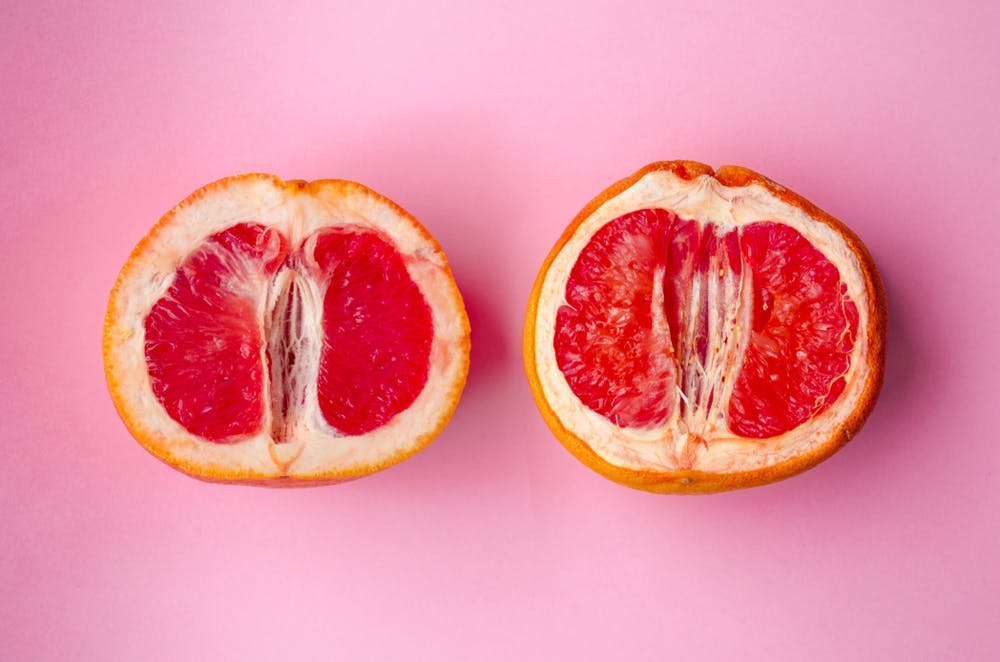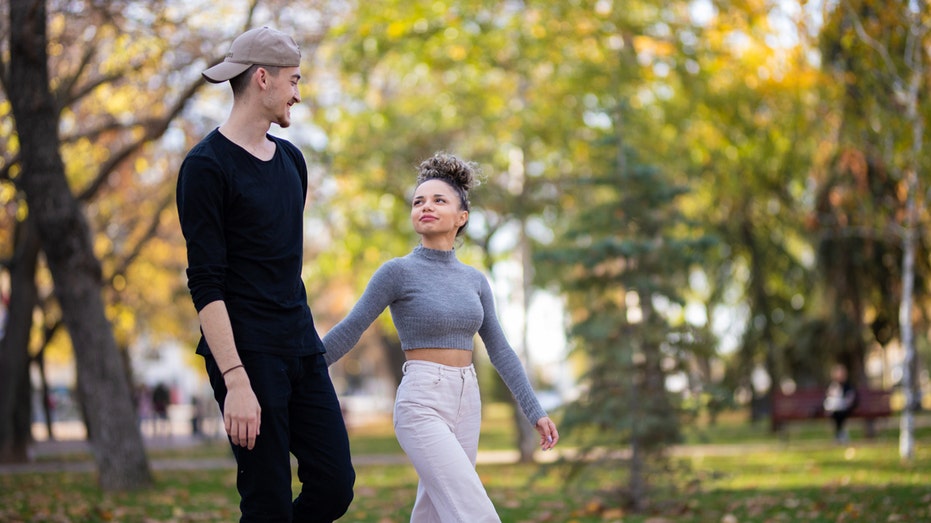As we grow older, our bodies undergo continuous changes, many of which happen gradually and may not be immediately noticeable. Even if you’re still getting carded when you buy a glass of wine, your body could be experiencing subtle aging processes you might not recognize at first. This is certainly true for the vagina and vulva — a cherished part of our anatomy that we don’t always receive comprehensive education about.
While schools tend to prepare us for puberty, explaining that we’ll begin growing pubic hair and start menstruating, the conversation often stops there. After that, we’re mostly left to figure out the rest on our own. But don’t worry, we’ve got you covered. We spoke with several OB-GYNs about how your vagina and vulva change over time. (Spoiler alert: It’s more than you might expect.)
1. The Vagina of Women in Their 20s to 30s

During this period, a woman’s vagina typically faces challenges related to sexual activity, contraception, pregnancy, and childbirth.
Vaginal Changes:
At this stage, the color and texture of the vulva and vaginal area may be affected by genetic factors and hormonal levels. Pubic hair fully develops during these years, and the vaginal walls are generally firm and elastic. The skin around the area is thicker compared to earlier years, and many women experience optimal vaginal health during this time.
Childbirth:
The pelvic floor is at its strongest in this age range, making it a favorable time for pregnancy and childbirth. Women in their 20s and 30s often have fewer complications during labor.
Sexual Activity:
Some women may experience vaginal dryness, particularly if using certain contraceptives. It’s essential to carefully manage the frequency of sexual activity and consider hydration and lubrication when needed to ensure comfort.
2. From Age 30 to 40: The Importance of Pelvic Floor Exercises

As modern society has led many women to delay pregnancy and childbirth until after 30, this age group presents unique challenges for pelvic health.
Vaginal Changes:
The pigmentation of the vulvar area may change over time, and it can become darker in some cases. The skin and muscles around the vagina remain relatively elastic but may begin to show signs of aging. Pubic hair may also become finer.
Childbirth:
By age 30, pelvic floor health may begin to decline. The muscles that support the bladder, uterus, and bowels can weaken, leading to issues like urinary incontinence or a feeling of heaviness. These changes may be more pronounced after childbirth, requiring extra care during recovery. Pelvic floor exercises, such as Kegel exercises, are highly recommended to strengthen these muscles.
Sexual Activity:
While libido doesn’t necessarily decrease in your 30s, external factors like work, family responsibilities, and stress can affect desire. For women who are breastfeeding, hormonal changes can lead to vaginal dryness, making sexual activity potentially uncomfortable. Regular pelvic exercises can help maintain comfort.
3. How Does the Vagina Change Between Ages 40 and 50?

Most women will begin to experience perimenopause during their 40s, which is the stage leading up to menopause. The changes that occur during this period significantly impact the vagina and overall reproductive health.
Vaginal Changes:
During perimenopause, women may experience fluctuations in estrogen levels, leading to symptoms like vaginal dryness and thinning of the skin. The vulvar area may also become paler, and pubic hair might thin or turn gray. As collagen production decreases, vaginal elasticity may reduce, and some women notice a decrease in natural lubrication during sexual activity.
Childbirth:
Pregnancy and childbirth in the 40s can place significant strain on the pelvic floor muscles. This may lead to an increased risk of pelvic organ prolapse or other pelvic issues. Maintaining a consistent routine of pelvic exercises is important to keep the pelvic muscles strong and functional.
Sexual Activity:
Vaginal dryness becomes more pronounced in this age range due to lower estrogen levels. It is advisable to use lubricants during sexual activity to reduce discomfort. Additionally, pelvic floor exercises can help alleviate some of the discomfort that may come with vaginal dryness and vaginal atrophy.
4. The Vagina of Postmenopausal Women Over 50

After age 50, most women enter menopause, which marks the end of the reproductive years. This brings about a series of changes that affect vaginal health.
Vaginal Changes:
Postmenopausal women may experience vaginal atrophy, where the vaginal walls shrink and become thinner due to the significant drop in estrogen levels. This leads to reduced lubrication and a more fragile vaginal environment. The vulvar area may also become drier and paler, and pubic hair may be sparse.
Childbirth:
Pregnancy at this stage is quite rare and often comes with significant risks. For women who may be experiencing menopause symptoms, pregnancy could lead to complications, such as pelvic organ prolapse.
Sexual Activity:
With significantly lower estrogen levels, vaginal lubrication is minimal, and intercourse may cause discomfort due to vaginal dryness. It’s important for women to use lubricants and engage in extended foreplay to make sexual activity more comfortable. In addition, it is crucial to continue practicing pelvic floor exercises to support overall vaginal health.
Conclusion: Understanding Vaginal Health at Every Stage of Life
As women age, their vaginal health changes in response to hormonal fluctuations, life events, and natural aging. Understanding these changes can help women maintain good health, make informed decisions about contraception and sexual health, and seek appropriate care when necessary.
It is vital to adopt a healthy lifestyle and incorporate pelvic exercises, such as Kegel exercises, to support pelvic floor health at every stage of life. By doing so, women can manage the changes in their body effectively and continue to lead active, fulfilling lives.
A fascinating new study published in Frontiers in Psychology has uncovered intriguing details about the role of height in romantic preferences. The study, which involved participants from several countries, provides fresh insights into why men tend to prefer shorter women, especially in certain relationship contexts, and why women generally gravitate toward taller men. The findings also suggest that height plays a more complex role in our romantic choices than we might have realized.
This article dives into the findings of the study and explores the reasons behind the height preferences in romantic relationships, with a particular focus on how these preferences vary in different types of relationships.
The Study: How Height Influences Romantic Preferences

The results highlighted a fascinating trend:
-
Men preferred women who were slightly shorter than the average female height in their country, with an average preference for women about 2.5 cm shorter.
-
Women, on the other hand, preferred men who were taller than the average male height, with an average preference for men about 2.3 cm taller.
This preference for height was not only seen across different countries but was also consistent among individuals of various ages and backgrounds.
Men’s Preference for Shorter Women in Short-Term Relationships

One of the most interesting findings from the study is that men’s preferences for women’s height varied depending on the context of the relationship. Men tended to prefer even shorter women for short-term relationships than they did for long-term ones. This suggests that height is not a trivial matter in romantic attraction but rather plays a more nuanced role depending on the type of relationship men are looking for.
For long-term relationships, men still preferred women who were slightly shorter than them but were more flexible when it came to the height difference. However, when the relationship was expected to be short-term, the preference for much shorter women seemed to grow. This may be due to various factors, including cultural influences or biological instincts related to reproduction.
Women’s Consistent Preference for Taller Men

In contrast, women’s height preferences were less variable. Women consistently preferred taller men across both short-term and long-term relationship scenarios. On average, women wanted a partner who was approximately 2.3 cm taller than the average male height in their respective country.
This preference for taller men has been observed in previous studies and may be tied to biological factors and evolutionary psychology. Throughout history, taller men have been associated with strength and protection, qualities that many cultures have valued in long-term partners. These traits may influence women’s attraction to height, regardless of the relationship’s duration.
Assortative Mating: The Preference for Similar Heights

The study also uncovered a fascinating phenomenon known as assortative mating, which refers to the tendency of individuals to choose partners who are similar in certain traits, such as height. The findings showed that taller individuals tended to prefer taller partners, while shorter individuals preferred shorter partners.
This pattern indicates that people are often drawn to individuals who share similar physical characteristics, including height. Assortative mating is thought to be influenced by both biological and cultural factors. For example, individuals of similar height may be more likely to feel comfortable and compatible with each other, as they share a similar physical presence.
The Impact of Cultural and Biological Factors on Height Preferences

While the study provides interesting insights into height preferences, it also raises important questions about how cultural and biological factors influence romantic choices. Height preferences may vary across different societies, with some cultures placing more importance on physical stature than others. Additionally, individuals in different cultures may have varying views on gender roles, which could influence their attraction to taller or shorter partners.
Biologically, the preference for taller men and shorter women may be tied to evolutionary psychology. In many species, physical size and stature are linked to strength, protection, and the ability to provide resources. These traits may have influenced human attraction preferences in ways that still manifest today.
Limitations of the Study
While the study provides valuable insights, it’s important to note that it has certain limitations. The study relied on minimalist drawings of individuals, which may not fully reflect the complexities of real-life interactions. Participants did not meet or interact with the individuals in the drawings, and height preferences may change when there are additional factors involved, such as personality, interests, and chemistry.
Furthermore, height preferences may be influenced by personal experiences or societal influences, which were not fully accounted for in the study. People’s preferences may vary based on their personal history or the media they consume, which often portrays certain ideals of beauty and attraction.
Height Preferences: A Reflection of Attraction and Compatibility
The study’s findings suggest that height preferences are not just superficial traits but can be deeply rooted in biological instincts and cultural conditioning. While some may argue that height should not matter in romantic attraction, these preferences reveal that our choices are influenced by a complex mix of evolutionary psychology, cultural norms, and personal experiences.
For men, the preference for shorter women may be tied to an instinctual desire for femininity, protection, and a sense of nurturing, while women’s preference for taller men may stem from historical associations with strength and security. However, it’s important to recognize that height is just one factor in the vast array of attraction and compatibility that shapes relationships.
Conclusion: The Complexity of Attraction and Height Preferences
This study sheds light on the fascinating relationship between height and romantic preferences. While the results are not necessarily groundbreaking, they provide important insights into why certain height patterns emerge in romantic choices. For men, a preference for shorter women seems to be more pronounced in short-term relationships, while women consistently prefer taller men, regardless of the relationship type. The phenomenon of assortative mating further complicates this picture, showing that individuals often choose partners of similar height.
Ultimately, it’s clear that height plays a significant role in romantic attraction, but it’s important to remember that attraction is a highly individualized experience. There is no universal standard for love, and personal preferences vary widely depending on individual desires, experiences, and cultural




